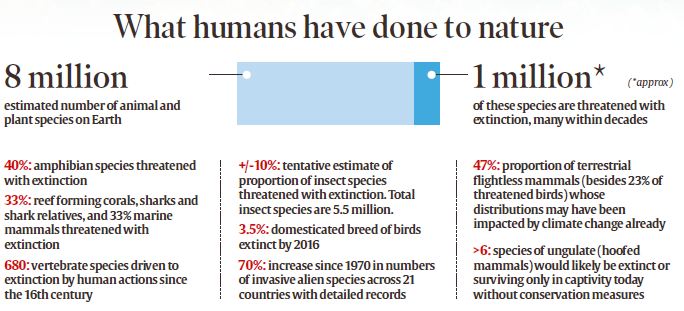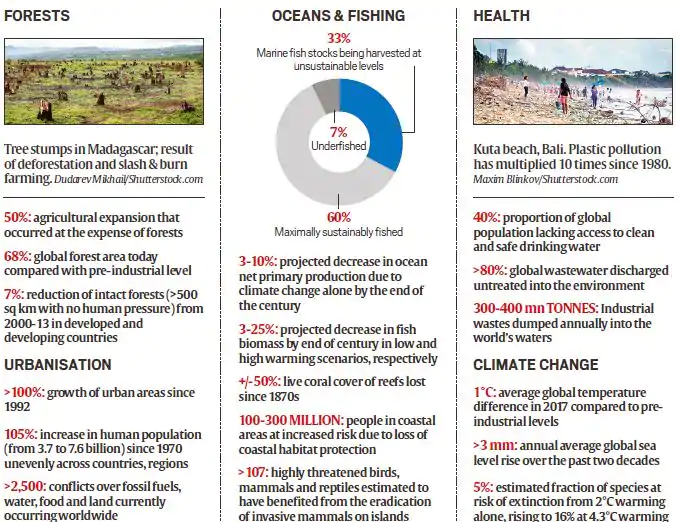7667766266
enquiry@shankarias.in
Why in news?
The Intergovernmental Science-Policy Platform on Biodiversity and Ecosystem Services (IPBES) recently released a report.
What is IPBES?
How does it differ from IPCC?
What is the present report on?
What are the key findings?


What is the relevance for India?
What is the way forward?
Source: Indian Express